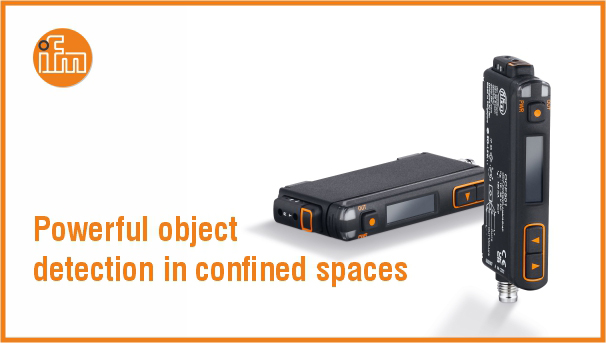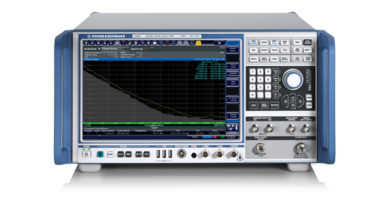Powerful object detection in confined spaces
Fibre-optic sensors are always the method of choice when space is at a premium. For such applications, ifm is now launching the new OCF series fibre-optic sensors. These can be set up intuitively, have numerous smart functions thanks to IO-Link and offer six powerful operating modes that the fibre-optic amplifier automatically selects when required.
Fibre-optic sensors work according to the same principle as conventional photoelectric sensors. However, the lens and the evaluation electronics are spatially separated from each other in this case, which offers an important advantage for many applications: The optical fibres can be positioned precisely in very confined conditions and detect even very small parts there. The remote fibre-optic sensor is then located in a suitable place, for example, mounted on the machine or even in a control cabinet.
The new OCF series fibre-optic sensors make such applications particularly easy. The narrow housings are suitable for mounting on DIN rails. There, they can be simply clipped on. The optical fibres can also be connected without tools by way of fibre-locking. Since the OCF complies with the high IP65 protection rating, it can also be mounted in the field, for example, directly on the machine. In order to make the subsequent set-up simple and intuitive, ifm placed great emphasis on usability during the development. The fibre-optic sensor has three buttons for operation. The plain text display of the integrated OLED display facilitates the 2-point teach-in. With the find-me function, localisation is simplified thanks to the flashing fibre. The OCF is capable of six different operating modes, with the correct mode being selected automatically as required. The output signal can be sent to a higher-level control system via IO-Link as well as via a fast digital output. The IO-Link interface is also used for diagnostics of the fibre-optic sensor. For example, the degree of soiling of the fibre can be monitored. This clean-me function enables predictive maintenance in the application. Together with the new fibre-optic sensors, ifm also offers a comprehensive range of matching fibre optics in a wide variety of designs so that the right configuration can be selected for every application.



